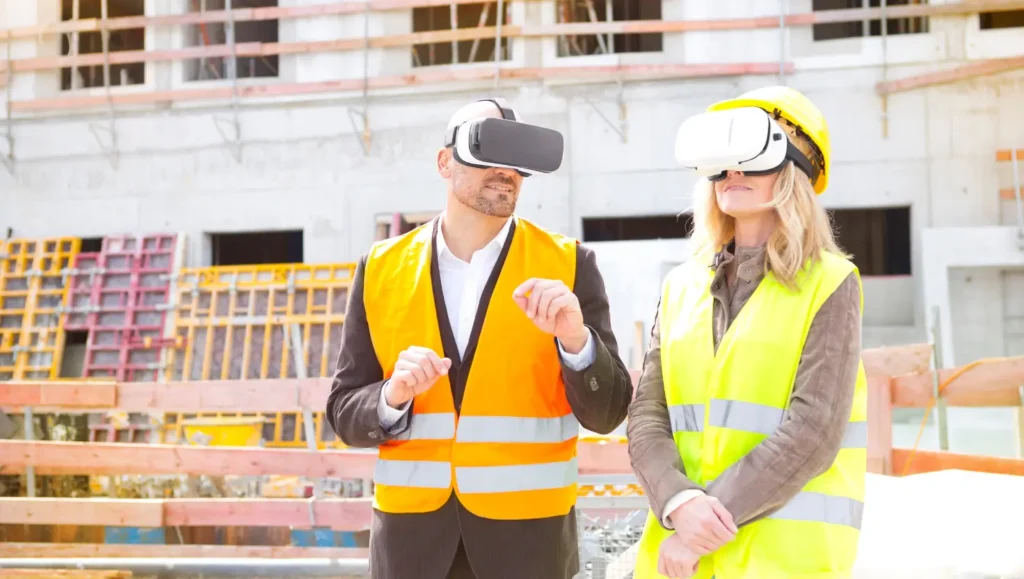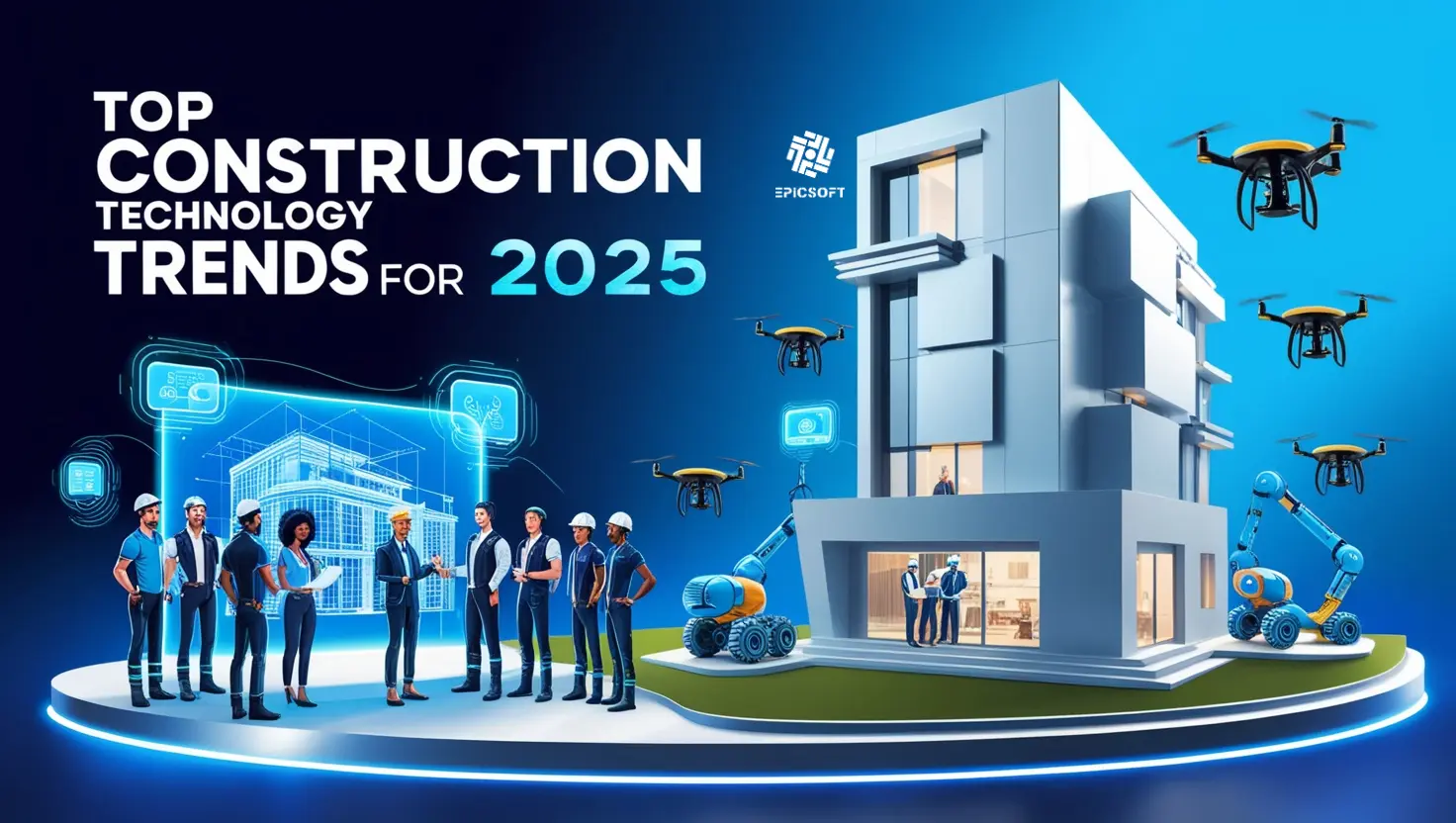The construction sector is currently undergoing a revolution due to the increased use of construction technologies and as we move towards 2025, it is apparent that new technologies are changing the way projects are conceived, built and operated and this change solves enduring issues such as efficiency, labor, safety and sustainability. This article explores the best construction technology trends of 2025 as well as their core uses and advantages, and backs these discussions with case studies that illustrate their use.
What is Construction Technology?
Construction technology comprises of the technologies and resources which improve the construction business sector. These can include architectural and engineering software, industrialized as well as prefabricated building components, construction robotics, automation systems, and many more all with the perfect goal to reduce costs, improve safety, and speed processes. Such cutting-edge solutions are rapidly becoming a need in the current and future states of construction rather than a competitive edge.
Top Construction Technology Trends for 2025
1. Artificial Intelligence (AI) and Machine Learning
In the construction space AI and machine learning have become an integral part of construction operations as they enable better communication, data analysis and decision making during construction. Predictive AI analyzes big data to foresee potential problems in a project, manage resources better and improve safety measures before, during and after the completion of a project.
Example: Using predictive analytics with Autodesk’s iq construction, BAM Ireland experienced a 20% improvement in quality and safety on site with a 25% reduction of major issues.
These technologies also facilitate real time analysis of data and this informs project managers quickly. Similarly, AutoSpecs is another tool that assists by correcting the disadvantages in the specification of the project thus improving the accuracy.
2. Building Information Modeling (BIM) Without Materials
BIM is Integrating with AI and other digital tools and Technologies, the construction groups are able to link AI with BIM thus improving transparency and minimizing rework. It has now changed from ‘an over-the-wall’ software into ‘building’ or design management interconnected throughout the project.
Example: Due to embedding advanced application of BIM techniques the firm Gamuda Bhd was able to improve efficiency of the project by making it possible to update while sharing data with other departments in real time, hence quick actions and cut down of costs occurred.
3. 3D Printing in Building
Instead of the drawing boards, 3D printers offer construction in an innovative and creative manner while occupying a smaller footprint at a more sustainable rate. This technology allows manufacturers to create more complex and intricate designs and structures with minimal waste of resources and materials.
Example: Given the challenges such as housing shortages and the need for sustainability, ICON the first company to develop and market 3D-printed affordable homes using this technology has proven that these challenges can be solved.
4. Digital Twins
Digital twins, which measure structures using a 3D computer generated model, are the new inventions making a difference in construction. They enable sound decisions on building design, operational efficiency, or maintenance requirements.
Example: Stakeholders can assess performance and building components’ metrics with Autodesk Tandem’s Digital Twin Solution thereby achieving sustainability objectives and improving asset performance over time.
5. Robotics and Automation
Construction is being radically altered by robotics, as these technologies automate the assembly process, eliminate the risk, and increase productivity. Robotics in construction includes tasks such as robotic bricklaying, machinery adoption, and automation which help companies to overcome labour shortages while increasing accuracy.
Example: a construction company Skanska applied robotic devices to perform mundane duties, freeing employees to concentrate on more significant tasks and decreasing injuries on the work site.
6. Extended Reality (XR): AR, VR, and the Metaverse
The use of augmented reality, virtual reality, and other extended reality (XR) technology is enabling the construction industry to operate in a completely different way. Tools such as these add in spatial awareness to design and facilitate a more in-depth review, training, and collaboration in design.
Example: Workshop Xr from Autodesk allows design teams to work on sections of the Revit and Navisworks models together in the same space and helps them fix the design problems a lot faster.
7. IoT and Sensor Data
The rise of the IoT is creating smarter building sites including those that employ sensors to track site conditions, equipment usage such as mowers or lawn care and worker’s health and safety. And this data can be used to help in predictive maintenance and work processes improvement.
Example: Engineer Hengelo aims to predict product failures through sensor data for efficient product maintenance, this would help reduce sit idling instances and reduce detrimental effect on maintenance.
8. Integrated Construction
Integrated construction is all the data, workflows and people into a single entity, therefore integrating this construction would be able to break down silos and encourage collaboration thus making the entire work simpler to execute.
Example: Team members in every phase of the project are linked by construction management software, which serves as their one platform and enhances the conditions during projects.
9. Advanced Takeoff and Estimating Tools
The rest of the tools harness the power of the cloud and automation to build estimates and bids that are precise to the shape requirements all of this is possible with the use of modern bidding technology. These solutions improve operational efficiency and accuracy, allowing the company to win more business instead of worrying about the amount of work done.
Example: Autodesk Takeoff permits contractors to easily execute 2D and 3D measurements covering all sizes and dimensions required for a site ensuring precise estimates and effective planning of the activities with respect to the project.
10. Sustainable Building Materials and Practices
Environment remains a major concern when it comes to building construction. Self-healing concrete and recycled composites, for example, are green building materials that have less carbon emissions while still meeting construction needs.

New Construction Technology Industry Applications
1. Evoution in Smart Cities
Smart cities are an innovative part of technology that combines AI, IoT and digital twins for better energy and management of various infrastructures. One of the projects that make great use of advanced IT in Urban planning is the Songdo International Business District which is located in South Korea.
2. Focus on Prefabrication
With advancement in building techniques, prefabricated and modular building approaches are becoming popular. By gaining popularity, building projects save on cost and time. Katerra’s and Factory OS from the international sourcing industry are paving the way with their remarkable methods.
3. Environmentally Friendly Structures
Environmentally friendly building such as the Edge in Amsterdam demonstrate the innovative integration of modern technologies into the building’s ecosystem, such as smart lighting and energy control systems.
The Construction Technology Outlook
2025 is not far, and within the time frame, construction industry will adapt to cutting-edge changes that will advance their procedures while providing maximum efficiency and safety. The implementation of AI, robots, and digital replicas will become as common practice for many top performing firms as materials science advances continues to change the construction industry. Early adopters of these trends will be best positioned in a competitive environment.
Final Thoughts – Embracing the Future of Construction Technology
The construction industry is witnessing technological advancements that are trendsetting in nature. From the use of AI to analytics and the provision of eco-friendly products, the prospects are nutty. The proper investments in these technology is performance enhancing and is in sync with the global urge for sustainability.
Ready to transform your projects with the latest construction technologies? Explore innovative solutions today and position your business for success in 2025 and beyond. Start your journey by partnering with technology providers, investing in training programs, and staying updated on emerging trends. The future of construction is here—embrace it!

